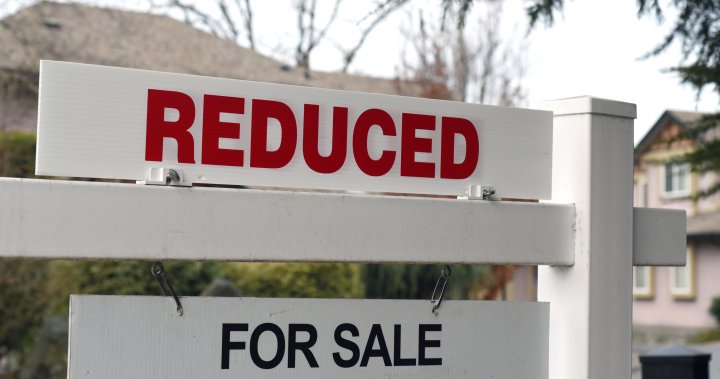The cloud of unaffordability hanging over Canada’s housing market could start to lift later this year and give prospective first-time homebuyers a path to ownership, according to a Royal Bank of Canada forecast.
The RBC report released Tuesday projects that the Canadian housing market will tell two different stories in either half of 2024.
Pressure from the Bank of Canada’s benchmark interest rate will keep activity muted in the first half of the year, argues author Robert Hogue, RBC assistant chief economist. Higher borrowing rates tied to the still-elevated policy rate will “restrain the recovery” in Canada’s cooling housing market, giving a more “gradual liftoff” in the first half of the year.
But a pivot to rate cuts mid-year — or perhaps even sooner — “will get the wheels turning faster” amid pent-up demand in the market.
Hogue points to “the severe loss of affordability” in the market, stemming from the run-up of home prices in the pandemic followed by the rapid tightening from the Bank of Canada, as spurring the nearly two-year housing correction.
Get the latest Money 123 news.
Sent to your email, every week.
RBC projects that while housing activity is set to rise 9.2 per cent annually over last year’s levels, it expects the Real Property Solutions (RPS) home price index would fall a further 1.0 per cent this year after a 2.6 per cent decline in 2023. Home prices would only start to meaningfully climb across the country in 2025, with a forecast increase of 3.1 per cent in the RPS index alongside a projected 16 per cent gain in sale volumes.
Home prices may not surge rapidly after rate cuts if supply continues to improve in the housing market, Hogue writes. Mortgage renewal shocks, which RBC does not expect to spur a wave of forced selling across Canada, could nonetheless see more sellers come to market, and an uptick in sales could lure some existing owners off the sidelines.
“An influx of sellers would keep supply-demand conditions in balance, and temper any upward pressure on demand,” the report notes.
Throughout the forecast, RBC estimates that national home prices would remain below the peak seen in 2022.
Accordingly, RBC sees an opening for frustrated would-be buyers to find inroads into the ownership market.
With expectations for more substantial interest rate cuts to come in the second half of 2024, but an overall easing in prices on the year, Hogue writes that prospective buyers could see affordability improve.
“The larger window of opportunity for buyers is likely to open only after interest rates have dropped materially — something we foresee in the latter stages of 2024 or into 2025,” the report read. “That’s especially the case for first-time buyers who may be more financially constrained.”
Strong population growth will continue to sustain demand, RBC notes.
The federal government’s plan to cap international student permits for two years is likely to have a “marginal impact” on overall homebuying demand, RBC says, with the most pronounced effects felt on local rental markets near post-secondary institutions in Ontario and British Columbia.
The report says Canada’s two most expensive housing markets are likely to see sales levels “rebound modestly” in 2024, with B.C. and Ontario expected to “turn a corner by the summer.”
Prices are expected to continue to drop in these provinces as well as Manitoba, Newfoundland and Labrador and Quebec, but Hogue adds that “it will take bigger rate cuts or deeper price drops to make a meaningful difference for buyers in expensive markets.”
Other provinces including Alberta and Saskatchewan are meanwhile already showing signs of a recovery, RBC says. Prices are expected to climb year-over-year here as well as in New Brunswick and Nova Scotia.
To learn more about how you can break into Canada’s housing market, check out Global News’ Home School series here.
© 2024 Global News, a division of Corus Entertainment Inc.




